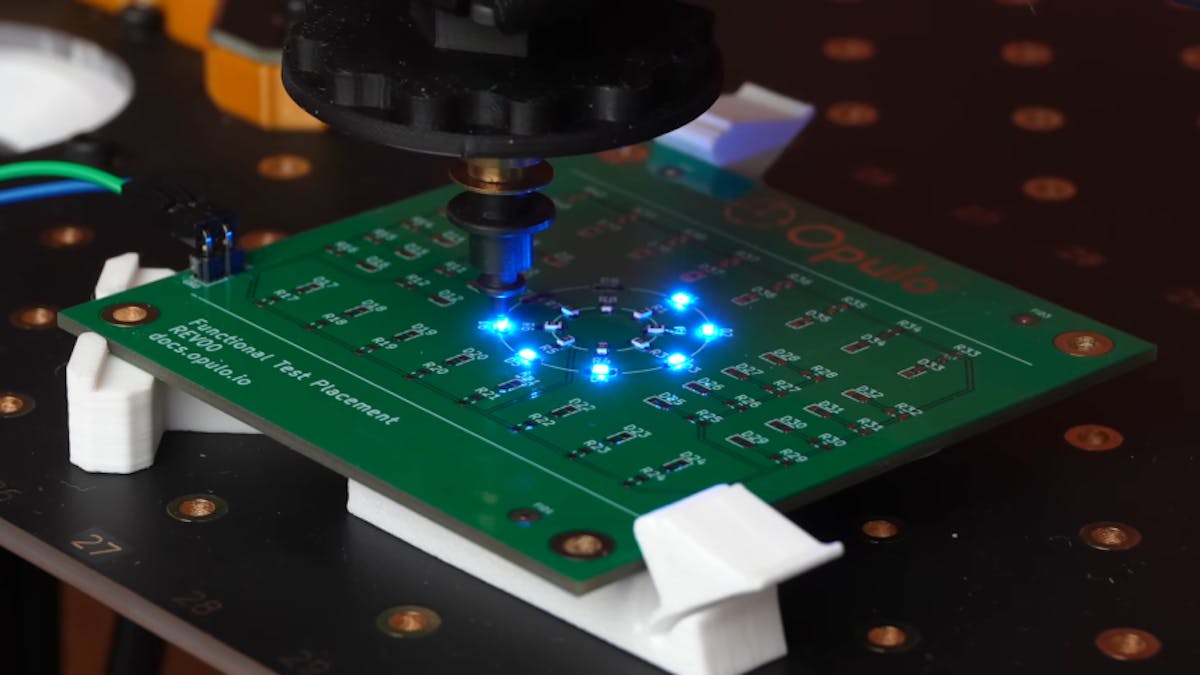Stephen Hawes Turns to Conductive Ink for Solderless PCBA with the LumenPnP
Bare Conductive's goop proves ideal for temporary testing of components as they're picked-and-placed.

Stephen Hawes, creator of the LumenPnP open source pick and place machine, has created something unusual: a way to test components as they're placed, effectively carrying out a full PCB assembly (PCBA) service — without using any solder.
"I had an idea," Hawes explains. "What if, as the parts go onto the board it starts working — parts of the board start spinning up as you place the parts on. I had this image in my mind of the LumenPnP running a job placing LEDs onto a PCB and as it places them down they pop up, little bits of light coming online as it completes the job."
The traditional PCB assembly process sees a board placed under a specially-designed stencil that is then used to apply small amounts of solder paste — a spreadable substance created by mixing tiny balls of solder with flux and other materials. A pick-and-place machine, like Hawes' own LumenPnP, is then used to automatically position surface-mount components over the applied paste, which is sticky enough to keep everything in place before the board is placed into a reflow oven to melt the solder balls and burn off the flux and other substances.
Solder paste is, technically, conductive before passing through the oven — but not reliably enough for what Hawes had in mind. His first attempt at finding an alternative focused on Z-tape, a double-sided adhesive tape which only conducts electricity in the areas where it has been compressed through the application of a component. "We could take this tape, put it across an entire PCB, and then when we've placed the parts down they make that connection in the Z axis and they start working automatically," Hawes explains, "no need to solder anything."
Sadly, that proved unsuitable: while the tape was conductive under constant pressure, it stopped conducting when the pressure was released. Hawes needed something else, and turned to conductive inks and paints — finding that Bare Conductive conductive paint had exactly the combination of tack and conductivity required for the experiment to succeed.
"I mean, come one, that's just the sickest thing you've ever seen," Hawes opines of the result. "As they go down, the light comes on. Like, I can't get over it, it's so cool. I don't think this, as it is, is quite robust enough to actually have an application somewhere," he admits, though it certainly seems promising for rapid board testing and prototyping — especially as the components can be easily removed from the board afterwards with a pair of pliers without damaging themselves or the board.
The project is detailed in full in the video embedded above and on Hawes' YouTube channel; the LumenPnP's design is available on GitHub under the weakly reciprocal version of the CERN Open Hardware License Version 2 and the Mozilla MPL 2.0 for the software and hardware respectively.
Freelance journalist, technical author, hacker, tinkerer, erstwhile sysadmin. For hire: freelance@halfacree.co.uk.


